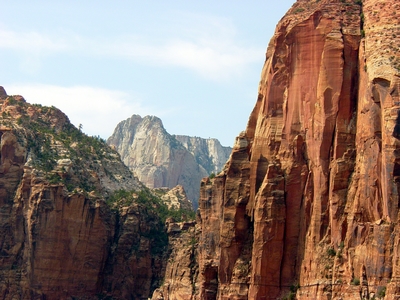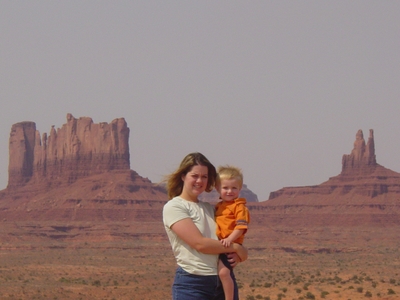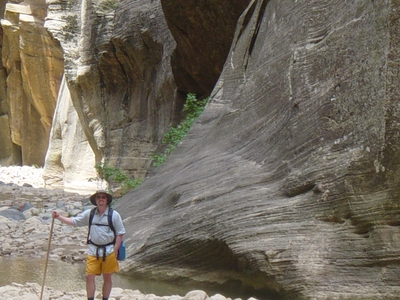 Zion National Park
Zion National Park
Springdale, Utah
Elevation: 3,800 Feet
The rocks of Zion formed over millions of years, and erosion has carved them into the formations we see today. Water is the single most important factor in the geology of this area. Most of the rock layers formed in oceans, lakes, or rivers. Water from springs, streams, and rivers, has sculpted the rock formations into canyons, mesas, and cliffs.
The geologic story of Zion has three main parts: deposition (sediments were deposited on layers and later cemented into rock), uplift (the whole area rose high above the sea level) and erosion (water carved into the rock, forming canyons). The rocks of Zion were laik kown during Jurassic times, sometimes called the age of dinosaurs. The lower layers of rocks are mostly mudstones, seltstones, and some sandstone. These were deposited primarily by slow moving streams ane rivers. Navajo Sandstone, the thickest layer in the park, was formed from wind depowited sand grains. What we now see as sandstone was once a huge desert of blowing sand dunes. Movements in the earth's crust caused the land to sink below sea level. A shallow sea covered the dunes, and lime (calcium carbonate) from the shells of sea animals, along with other minerals, seeped into the sand and cemented the grains together, thus forming sandstone. Later in time, more earth movements caused the land to uplift. The sea drained away and the rivers and streams bedan to carve, or erode the sandstone. Eventually, they formed the deep canyons we see today.





